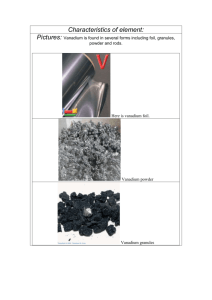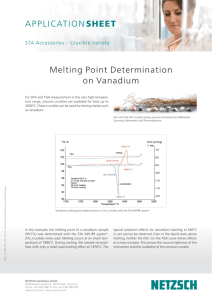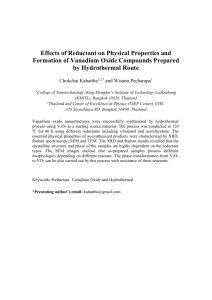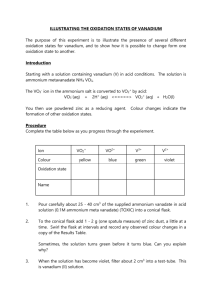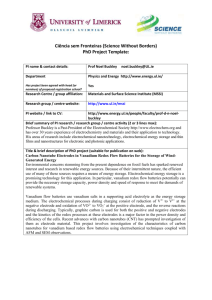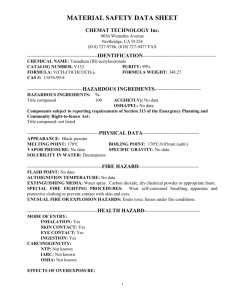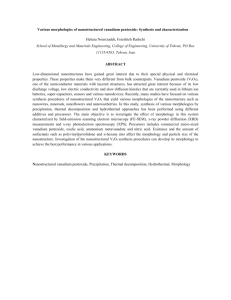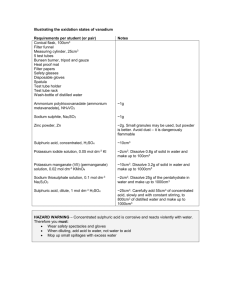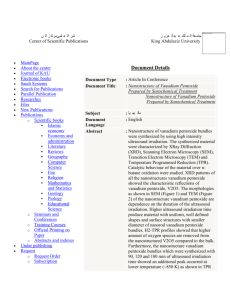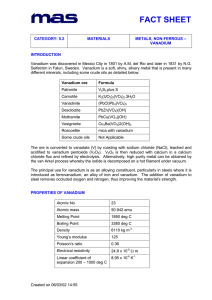Scientific abstract
advertisement
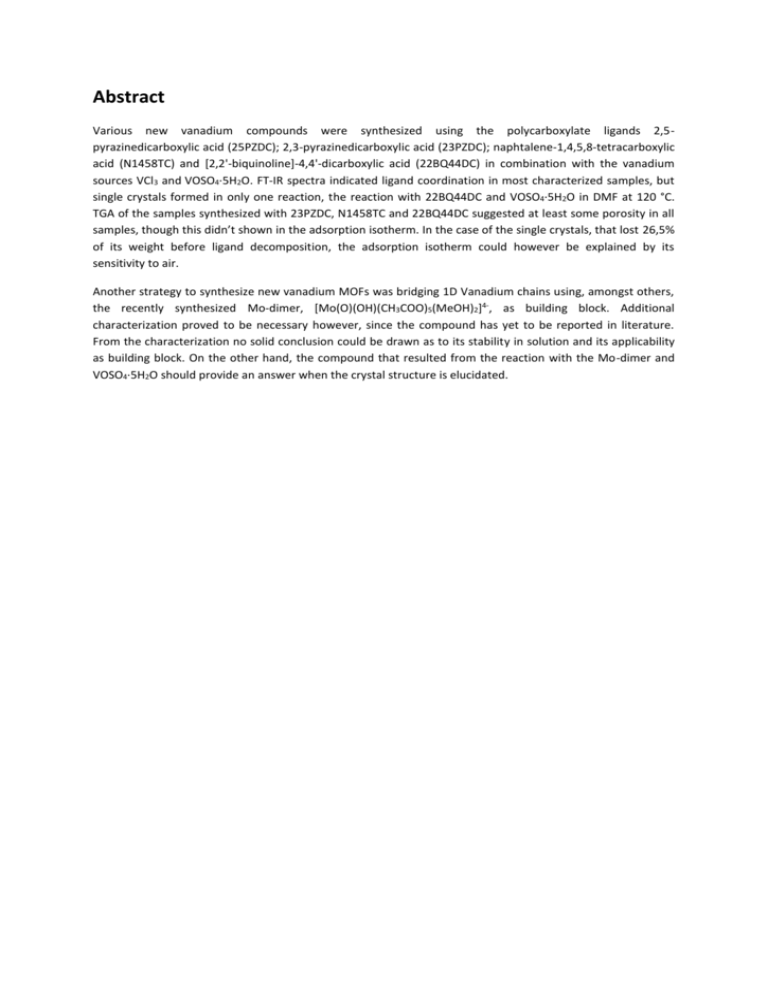
Abstract Various new vanadium compounds were synthesized using the polycarboxylate ligands 2,5pyrazinedicarboxylic acid (25PZDC); 2,3-pyrazinedicarboxylic acid (23PZDC); naphtalene-1,4,5,8-tetracarboxylic acid (N1458TC) and [2,2'-biquinoline]-4,4'-dicarboxylic acid (22BQ44DC) in combination with the vanadium sources VCl3 and VOSO4·5H2O. FT-IR spectra indicated ligand coordination in most characterized samples, but single crystals formed in only one reaction, the reaction with 22BQ44DC and VOSO4·5H2O in DMF at 120 °C. TGA of the samples synthesized with 23PZDC, N1458TC and 22BQ44DC suggested at least some porosity in all samples, though this didn’t shown in the adsorption isotherm. In the case of the single crystals, that lost 26,5% of its weight before ligand decomposition, the adsorption isotherm could however be explained by its sensitivity to air. Another strategy to synthesize new vanadium MOFs was bridging 1D Vanadium chains using, amongst others, the recently synthesized Mo-dimer, [Mo(O)(OH)(CH3COO)5(MeOH)2]4-, as building block. Additional characterization proved to be necessary however, since the compound has yet to be reported in literature. From the characterization no solid conclusion could be drawn as to its stability in solution and its applicability as building block. On the other hand, the compound that resulted from the reaction with the Mo-dimer and VOSO4·5H2O should provide an answer when the crystal structure is elucidated.
